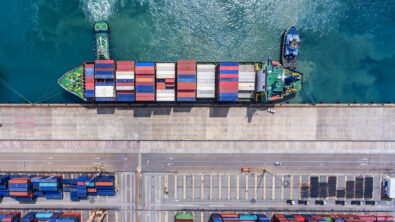Shift left logistics to avoid bottlenecks in the supply chain, reduce costs and meet climate targets

The logistics industry has evolved in the last decade, requiring a broader service portfolio to meet new demands. What’s the next move for businesses that want to not only meet climate targets but also comply with the many new international laws such as the Corporate Sustainability Due Diligence Directive (CSDDD) in the European Union (EU) or the Uyghur Forced Labor Prevention Act (UFLPA) in the United States? How can they deal with stress factors in the supply chain that can hardly be measured, much less predicted? What’s the best way for shippers and their logistics service providers to meet the higher standards for supply chain management?
The time to shift left is now
Thriving under such difficult conditions requires the logistics industry to shift left and make itself relevant from the start of the value chain when product design and production planning set the tone for everything that follows. Because that’s where the potential lies to have a meaningful impact on sustainability, availability, production costs, logistics costs and downstream processes. This shift left is also a shift forward for logistics, aligning it more closely with customers and their needs, bringing it closer to industrial processes and enhancing the role it plays in successful business outcomes.
If you’re ready to make the shift, read our new white paper “The shift-left logistics imperative”:
https://resources.sw.siemens.com/en-US/white-paper-the-shift-left-logistics-imperative


